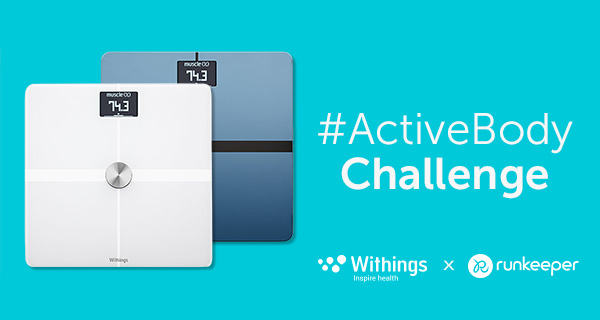At Runkeeper, we’re all about using data to gain valuable insights into our fitness journey. And because of that, we’re slightly obsessed with all things Withings. That’s why we partnered with them once again to bring you the #ActiveBody challenge, which is inspired by their full composition smart scale. You may be wondering, what exactly is a smart scale? And what does it measure? By now you’re probably familiar with BMI (that’s Body Mass Index), but how exactly is that body mass broken down? Read on for more insight on all the insights.
Fat Mass
Just as it sounds, fat mass percentage tells you how much of your body’s mass is made up of fat. The American Council on Exercise has a helpful guide towards understanding what fat mass percentage indicates about overall health.
Water Percentage
Water percentage tells you how much fluids in your body are accounting for your total weight. A water percentage of about 50 indicates a well-hydrated and happy body. Anything drastically lower could suggest dehydration, and let you know to drink up, while anything above could mean you’re tracking towards Hyponatremia, and should ease up on the liquids.
Bone Mass
Healthy bone mass is anywhere between 2.5% and 4% in women, and 3% and 5% in men. Because low bone mass, or osteopenia, has no apparent symptoms, taking a measurement can be an important way of assessing your risk. If bone mass is low, consider adjusting your diet to include more foods rich in vitamin D and calcium.
Muscle Mass
One of the major issues with relying on BMI alone as a health indicator is that it tells you nothing about whether that mass is mostly lean or fat. By tracking muscle mass, you can be sure that any gains you make on your fitness journey are the kind you’re looking for.
Complete Runkeeper’s #ActiveBody challenge before August 22, then redeem your 20% off of a Withings Smart scale to get access to all of these smart metrics.







